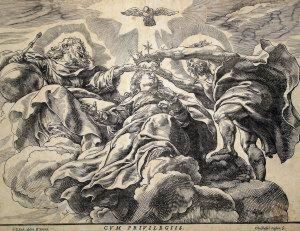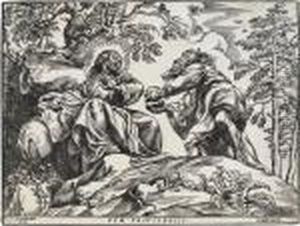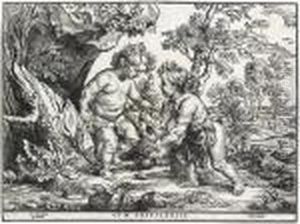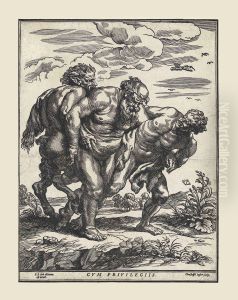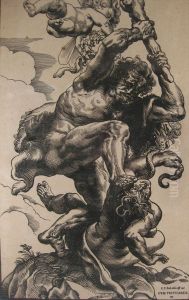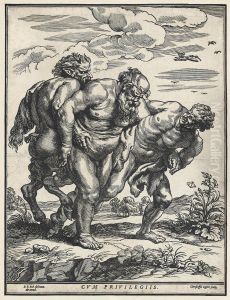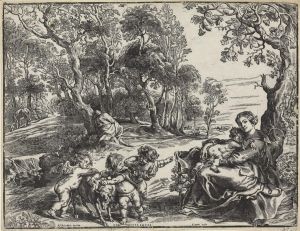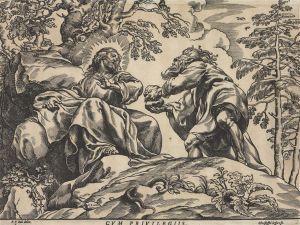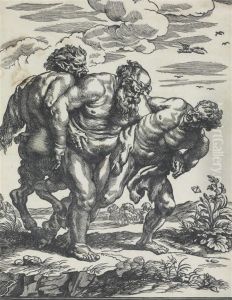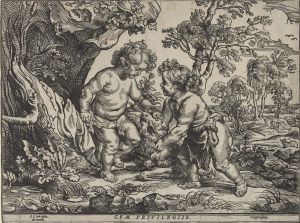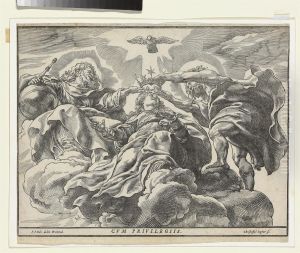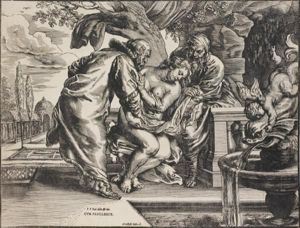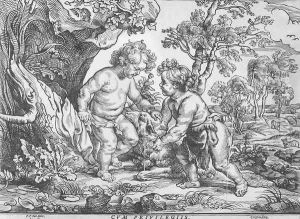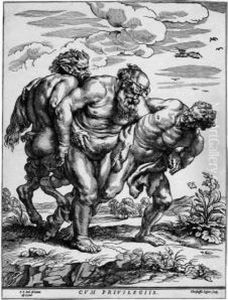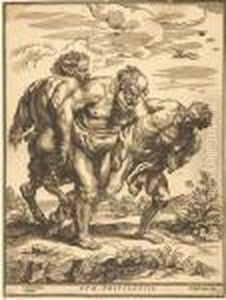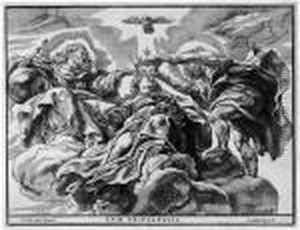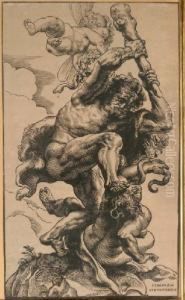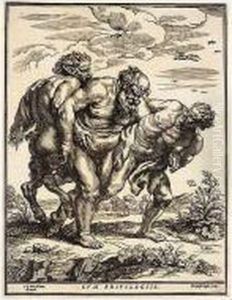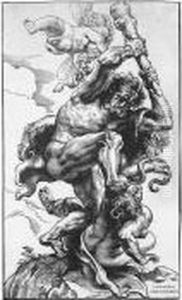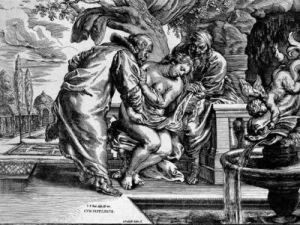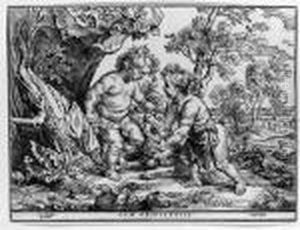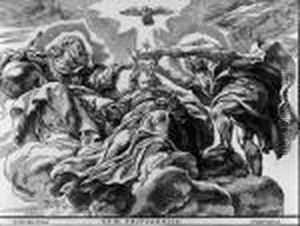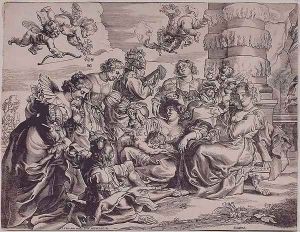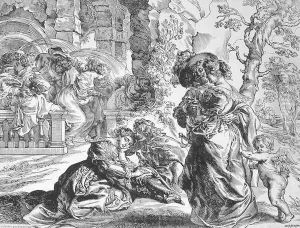Christoffel Jegher Paintings
Christoffel Jegher was a Flemish woodcutter and printmaker active during the Baroque period. Born in Antwerp in 1596, Jegher is renowned for his collaboration with the famous Flemish painter Peter Paul Rubens. Although not as widely recognized as Rubens himself, Jegher's contribution to the world of printmaking was significant, and he played a crucial role in the dissemination of Rubens' compositions through his skilled woodcuts.
Jegher's work as a woodcutter involved carving the designs created by artists into wood blocks, which were then used to print images on paper. This process required exceptional precision and artistic sensibility, as the final print needed to reflect the original artist's vision accurately. Jegher worked closely with Rubens on several projects, one of the most notable being the illustration of the book 'The Life of the Virgin Mary,' which is considered a masterpiece of Flemish woodcut art.
The collaboration between Jegher and Rubens resulted in some of the most intricate and large-scale woodcuts of the time. Their joint work often depicted biblical and mythological scenes with a high level of detail and dynamic composition, characteristics that were emblematic of the Baroque style. Jegher's ability to translate Rubens' dramatic chiaroscuro and vigorous lines into the woodcut medium contributed to the success of their prints, which were sought after by collectors and art enthusiasts.
Jegher's woodcuts are characterized by their bold lines and clear forms, which allowed for the mass production of Rubens' designs, thus reaching a wider audience than the original paintings ever could. Through his prints, Jegher helped to solidify Rubens' reputation and to spread the Baroque aesthetic throughout Europe.
Despite his collaboration with Rubens being the most celebrated aspect of his career, Jegher also worked with other artists and produced his own designs. However, details about his independent work and other aspects of his life remain scarce.
Jegher lived and worked in Antwerp for most of his life, which was a vibrant center of art and commerce during the 17th century. He died in 1652 or 1653, leaving behind a legacy as one of the foremost woodcutters of the Flemish Baroque. His works continue to be studied and admired for their technical skill and artistic beauty, contributing to the understanding of printmaking practices in the Baroque era.
